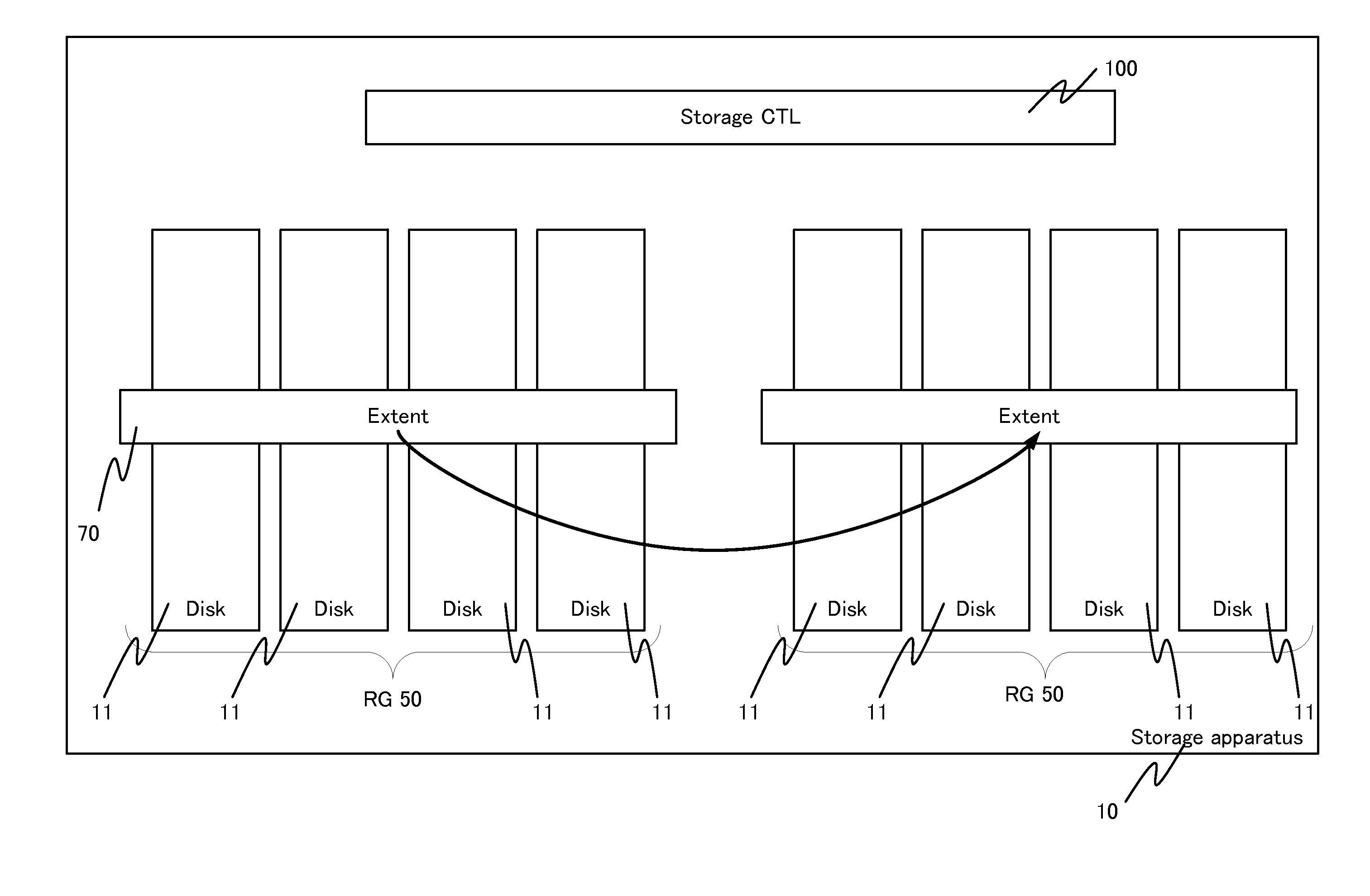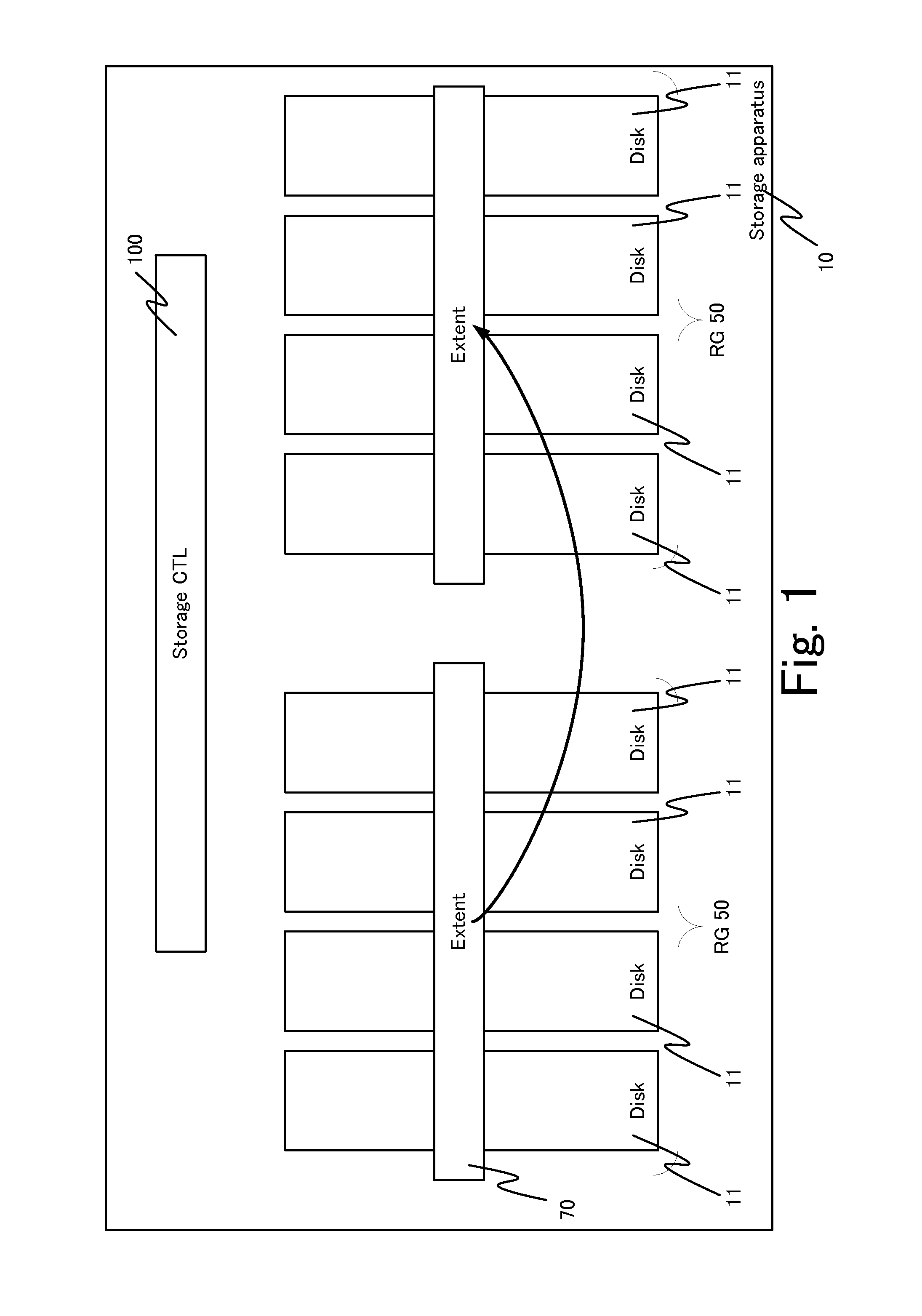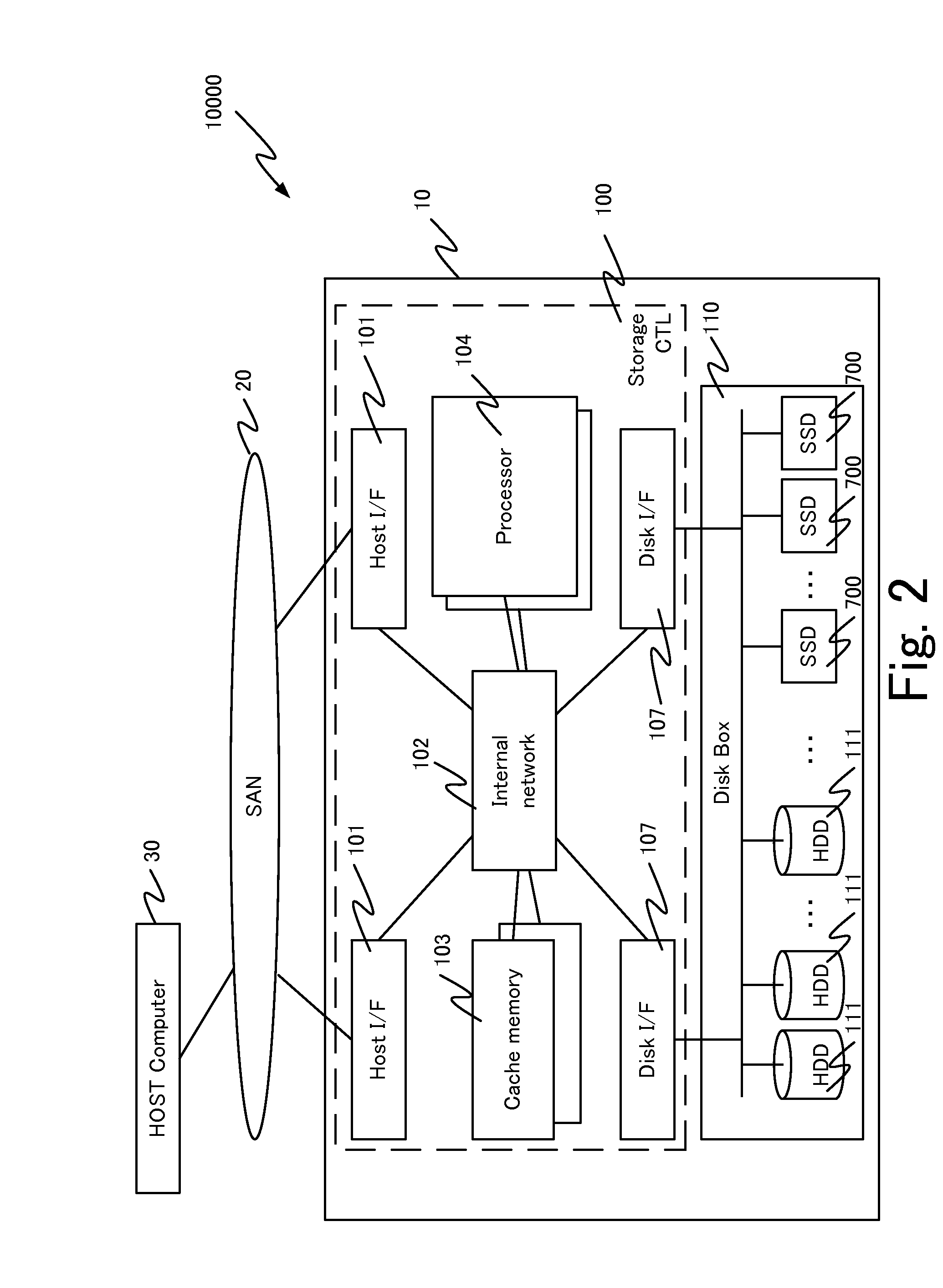Storage apparatus and storage control method
a storage apparatus and control method technology, applied in the direction of storage adressing/allocation/relocation, instruments, input/output to record carriers, etc., can solve the problems of reducing the capacity of data, and reducing the number of times of data write. , to achieve the effect of reducing the number of blocks and reducing the number of deletions
- Summary
- Abstract
- Description
- Claims
- Application Information
AI Technical Summary
Benefits of technology
Problems solved by technology
Method used
Image
Examples
first example
[0081]FIG. 2 is a diagram illustrating a configuration example of a storage system 10000 including a storage apparatus 10 according to a first example.
[0082]The storage system 10000 includes the storage apparatus 10 and a host computer 30. The host computer 30 is an example of an upper apparatus that uses the storage apparatus 10. The host computer 30 is an application server, for example. The host computer 30 and the storage apparatus 10 are communicatively coupled to each other through a storage area network (SAN) 20, for example. As the SAN 20, a fiber channel, a small computer system interface (SCSI), an internet small computer system interface (iSCSI), a universal serial bus (USB), an IEEE1394 bus, a serial attached SCSI (SAS), or the like can be used. Further, another type of communication network (for example, a local area network (LAN)) may be employed in place of the SAN 20. Note that, in the example of FIG. 2, the storage system 10000 includes one host computer 30 and one ...
second example
[0252]Next, a second example will be described. In the second example, a different portion from the first example will be mainly described.
[0253]While, in the first example, the compression ratio has been acquired as the average value of an SSD unit, in the second example, a compression ratio is acquired in units of entry. To be specific, an SSD controller 710 provides a data compression ratio of an entry unit to a response command to be transmitted to a storage controller 100 at the time of completion of WR. By reference to the data compression ratio included in the response command, the storage controller 100 can manage the compression ratio for each entry.
[0254]Accordingly, expectation accuracy of an FM WR expected amount of each entry can be enhanced, compared with the first example, and as a result, execution accuracy of life leveling processing can be improved.
[0255]FIG. 30 is a diagram illustrating a configuration example of a statistical information management table 13600 ac...
third example
[0268]Next, a third example will be described. Note that only different points from the first and second examples will be described in the third example.
[0269]In the third example, write amplification (WA) is added to information for expectation of an FM WR amount, in addition to the compression ratio.
[0270]Typically, processing unique to an SSD such as WL or reclamation occurs inside an SSD 700. Therefore, a data amount actually written in a flash memory is larger than a data amount actually acquired by the SSD 700 from a storage controller 100. A ratio of the data amount actually written in a flash memory to the received data amount is called WA. An increase in a WR data amount due to the processing inside the SSD also depends on an access pattern, a size of WR data, and the like.
[0271]When the WR data amount is increased due to the unique processing inside the SSD 700, the number of times of deletion is increased. Therefore, in the third example, the storage controller 100 additi...
PUM
 Login to View More
Login to View More Abstract
Description
Claims
Application Information
 Login to View More
Login to View More - R&D
- Intellectual Property
- Life Sciences
- Materials
- Tech Scout
- Unparalleled Data Quality
- Higher Quality Content
- 60% Fewer Hallucinations
Browse by: Latest US Patents, China's latest patents, Technical Efficacy Thesaurus, Application Domain, Technology Topic, Popular Technical Reports.
© 2025 PatSnap. All rights reserved.Legal|Privacy policy|Modern Slavery Act Transparency Statement|Sitemap|About US| Contact US: help@patsnap.com



